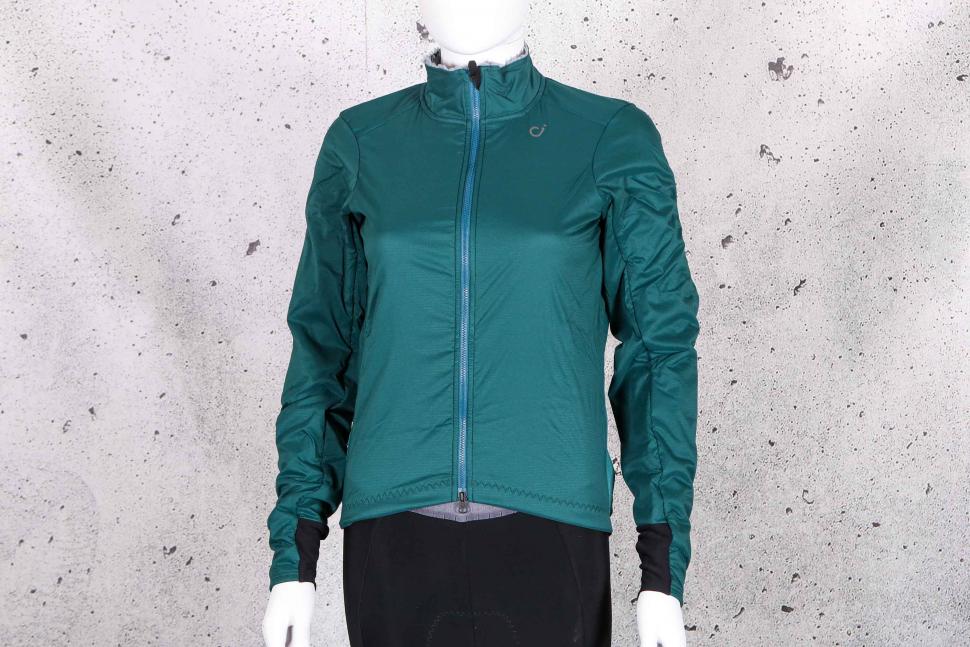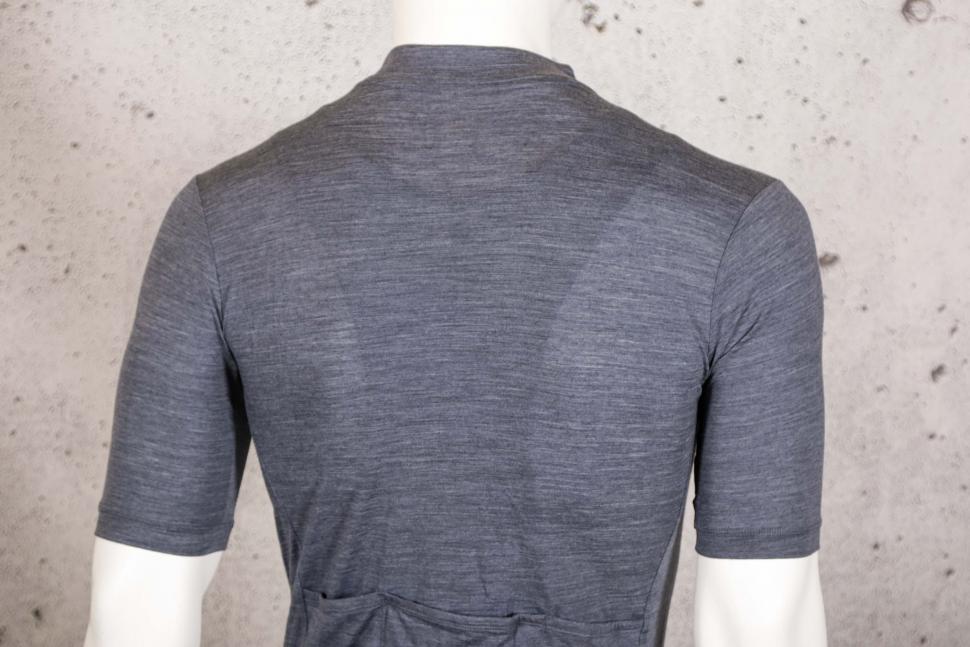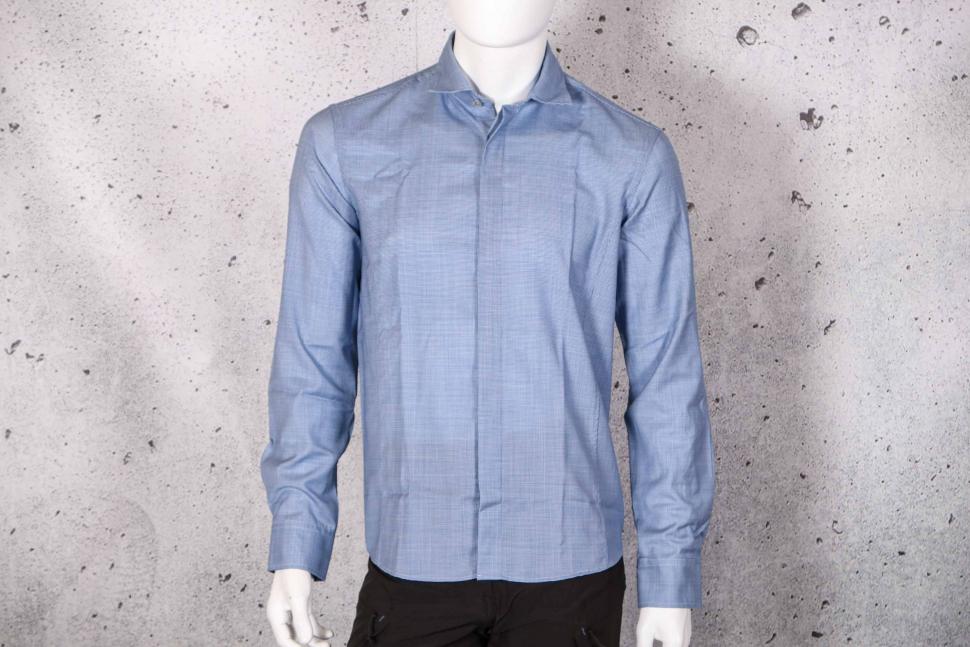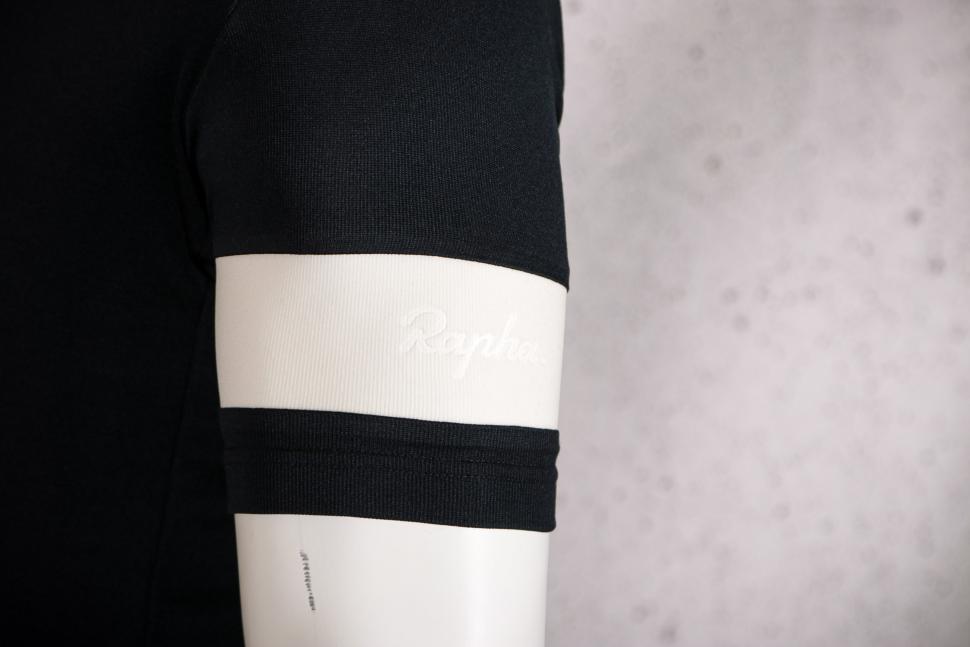- News
- Reviews
- Bikes
- Components
- Bar tape & grips
- Bottom brackets
- Brake & gear cables
- Brake & STI levers
- Brake pads & spares
- Brakes
- Cassettes & freewheels
- Chains
- Chainsets & chainrings
- Derailleurs - front
- Derailleurs - rear
- Forks
- Gear levers & shifters
- Groupsets
- Handlebars & extensions
- Headsets
- Hubs
- Inner tubes
- Pedals
- Quick releases & skewers
- Saddles
- Seatposts
- Stems
- Wheels
- Tyres
- Tubeless valves
- Accessories
- Accessories - misc
- Computer mounts
- Bags
- Bar ends
- Bike bags & cases
- Bottle cages
- Bottles
- Cameras
- Car racks
- Child seats
- Computers
- Glasses
- GPS units
- Helmets
- Lights - front
- Lights - rear
- Lights - sets
- Locks
- Mirrors
- Mudguards
- Racks
- Pumps & CO2 inflators
- Puncture kits
- Reflectives
- Smart watches
- Stands and racks
- Trailers
- Clothing
- Health, fitness and nutrition
- Tools and workshop
- Miscellaneous
- Buyers Guides
- Features
- Forum
- Recommends
- Podcast
feature
 2022 Velocio Alpha Merino Air jacket - collar inside.jpg
2022 Velocio Alpha Merino Air jacket - collar inside.jpgIs merino wool really the ultimate sustainable choice for cycling kit?
Merino wool is often marketed as the irrefutable sustainable choice fabric for cycling kit, with brands endlessly listing the natural performance benefits for outdoor exercise. Is it really as environmentally friendly as we're led to believe though?
Yes, there are an impressive amount of those natural performance benefits and it results in cycling gear you’re bound to enjoy wearing, but even merino isn't without its issues. While we'll acknowledge the wonderful qualities of this renewable resource, in this feature we'll also be looking at where merino is sourced, the ethical problems and the certifications you should be looking out for, why it’s often blended and the consequences, and how you should be looking after your merino gear to make the most of its sustainable value...
How is merino cycling kit sustainable?
In short, if a product is durable and has performance benefits, you're more likely to only buy once and use it lots. It’s important for us as consumers to put more effort into finding suitable products that we like and need, after assessing if we can use what we currently own.
Buy something that suits your needs, and do it once. It’s no good purchasing a product that is slightly better for the environment if you then fail to use it, and need to buy the more suitable item second time round.
It’s much more environmentally friendly to make a limited number of considered purchases. If it’s not a hasty purchasing decision and you’ve spent longer saving up for the premium performance item, then you’re also more likely to appreciate the garment and take good care of it.
Velocio is one cycling apparel brand that makes good use of merino in specific products, and it explains that its overarching aim is to create apparel that is both high performance and durable: “Our primary goal is to create apparel that improves experience and comfort and lasts a really long time.
“We recognise that the highest impact any apparel has is manufacturing, so these two goals mean that we can effectively reduce the impact of manufacturing by reducing the number of garments produced if we can make a product that people love to wear, and they can wear that product longer.”
There’s no doubt that merino wool garments boast a lot of performance benefits and so are likely to keep you satisfied. As detailed on Woolmark, here’s what it can offer:
Warmth: Merino wool contains crimps (natural waviness) which create pockets that trap air as you move. As that air can’t circulate it retains heat from your body to keep you warm.
This heat retention method which utilises the merino’s fine fibres provides a high warmth to weight ratio - you can stay warm with minimal bulk, and therefore it performs a useful role in a layering system for dealing with the cold or elements.
Merino wool also maintains its insulating properties when damp, meaning it has versatile use.
Soft and comfy: As merino wool fibres are fine and more flexible than standard wool fibres, they provide a gentler next-to-skin experience and, with this, can reduce itchiness issues.
Breathability: Wool is naturally highly breathable as it can absorb large quantities of moisture into its own fibres, holding it away from your skin before then moving it away to evaporate into the air.
Quick-drying: The fine fibres produce lighter fabrics that dry quicker. The fast-drying aspect is convenient for trips away and also is great for cutting down on the environmental impacts by reducing the need for high energy use for drying.
Odour resistant: Merino wool garments can be worn for longer between washing intervals because of the natural odour resistant properties of wool. This makes it a practical option for bikepacking trips as you can wear the same item of clothing without any social judging.
“It retains its benefits and often reduces other things needed on synthetics, like anti-bacterial treatments or coatings due to its natural and inherent properties,” Velocio adds.
Renewable and biodegradable
A sheep produces a new fleece each year, meaning that wool is a renewable fibre.
Merino wool is a natural fibre, and therefore 100% biodegradable. The ideal conditions are warm, damp soil combined with access to oxygen.
Researchers in New Zealand found in a study that merino fabrics lost around 36% of their mass after only two months burial in soil and up to an impressive 99% after nine months, whereas a polyester knitted fabric did not degrade at all during the course of the nine-month burial period.
Merino wool has also been found to readily biodegrade in a marine environment, whereas synthetic fibres do not.
The Woolmark Company is a not-for-profit organisation that works alongside Australia’s 60,000 woolgrowers to research, develop and certify Australian wool. It conducted a study into the biodegradability of untreated and machine washable merino wool in a marine environment compared to nylon, polyester and polypropylene.
To simulate a partial garment lifetime, all fabrics were washed repeatedly before testing. The rate of biodegradation was then compared to that of kraft paper pulp, a substance known to biodegrade readily.
Researchers found untreated wool biodegraded at 20.3% the rate of the pulp and the machine-washable wool biodegraded more than three times as quickly, at a rate of 67.3%. Nylon biodegraded at the slowest rate of just 0.8%, followed by polypropylene (1.8%) and polyester (6.3%).
Merino wool is therefore a good environmental choice during the use phase, as it won’t be polluting the ocean when being washed. Once it’s reached the end of its usable life, it can biodegrade fully when buried in soil.
Less energy intensive use phase
Two of the reasons for choosing merino wool are for its naturally odour-resistant and anti-bacterial qualities. Thanks to these qualities the social and hygienic reasons for washing frequently are significantly reduced; however, this benefit for the environment is only realised if you follow through and practice good washing and drying habits.
“Wool garments have particular attributes that favour reduced environmental impacts in the garment use phase, associated with odour resistance leading to less frequent need for washing, low washing temperature requirements and suitability for air drying practices,” it’s noted in Wiedemann, Stephen G. et al.’s study (2021).
Merino wool may have potential for a long life and low environmental impact in use, but the study concluded that there are “substantial differences between the best, current and worst case scenarios”. The use phase is well understood to be a hotspot for fossil energy demand and water consumption, but as the study acknowledges, with merino wool “opportunities exist for consumers to rapidly reduce these [environmental] impacts”.
Airing wool garments can help keep the clothing free of odours for longer, according to Laitala, K. et al.'s study (2017). By doing this you can maximise the number of times a wool garment is worn before it is washed.
As merino wool is quick-drying thanks to its fine fibres, it’s important to realise that there’s less need to attempt to quicken the drying process. Line drying or drying in an unheated room is the least energy intensive and so you should be using one of these methods where possible.
However, Laitala, K et al.'s study (2012) acknowledges that in practice it can be difficult to follow the ideal washing scenario because if you own few wool garments, it can take longer to accumulate a wool-specific laundry load, which may result in efficient washing loads.
With this in mind, Laitala, K. and Klepp, I.G.'s study (2016) recommends airing wool garments as it gives you more time to accumulate a fuller wool load. If this is not enough, making up the rest of a wool wash with garments made of other fibres is okay, as a wool wash cycle tends to be more gentle than other wash settings, and therefore won’t be detrimental to the other fibres.
Consumer washing and drying habits are a key part of making best use of the environmental benefits of merino wool, and while brands can do a lot more to instil these environmentally friendly practices by making it clearer on the product packaging, it’s down to you to wash less frequently and dry in an energy-saving way.
Can merino cycling kit be unsustainable? Mulesing, sourcing and more
Mulesing is method that's carried out to reduce the risk of losing sheep to a parasite called flystrike, but it is a painful procedure where skin is removed from around the backside of the sheep. This practice is the most important to be aware of, and to ensure you avoid if you're conscious about the welfare of the animal your garment came from.
Regular washing and shearing are much kinder methods of protecting the sheep, albeit much more expensive. Sheep that have been treated with the kinder methods produce non-mulesing merino wool.
“Where these [natural fibre] materials become problematic is more commonly associated with ethics,” Velocio acknowledges. “The treatment of these animals, how it’s processed, milled and so on.” The brand adds that down is another example of an amazing natural material in terms of performance, that has a sordid past.
“With anything - whether it’s sourcing raw materials, labour in manufacturing or end of garment life, it’s important that we consider how things are made and ensure that everyone and everything that’s involved through that process is part of that product.
“We are always working to ensure that our product meets the highest standards at every step - environmentally and ethically - and we work with all of our partners to continue to challenge this process and see where we can improve.”
Sheep mulesing has been illegal in New Zealand since 2018, but in Australia the practice is still legal.
Standards and certifications aim to address the environmental and social challenges related to wool production, and so it’s important to ensure the brands you are buying from are sourcing from certified farms and mills.
RWS stands for the Responsible Wool Standard, and alongside guaranteeing the absence of mulesing, this standard aims to ensure animal welfare through the application of Five Freedom points:
- Freedom from hunger or thirst
- Freedom from discomfort
- Freedom from pain, injury or disease
- Freedom to express normal behaviour
- Freedom from fear and distress
The Responsible Wool Standard’s social requirements are based on the principles of the International Labour Organisation’s Declaration on Fundamental Principles and Rights at Work, for guarantees that good working conditions are upheld.
Rapha, for example, has committed to only sourcing wool that is certified to the Responsible Wool Standard (RWS) by 2025. “Our commitment to using the finest, most responsibly sourced wool ensures the welfare of sheep – no mulesing – and land management practices that protect soil health, biodiversity and native species,” Rapha states on its website.
Where is merino wool sourced from?
For the cycling kit to be sustainable, 'virgin' (first time use) wool needs to be sourced from farms that are Responsible Wool Standard certified, which promote standards for animal welfare and land management. But where are these farms?
Merino wool is a natural fibre grown by merino sheep which were originally bred in Spain in the 12th century, and were later introduced to Australia in the 1700s.
“Nowadays 81% of merino wool is produced in Australia, which is the leading producer followed by New Zealand, South Africa, Uruguay, Argentina, etc,” Rapha highlights.
“There is a herd of Bowmont Merino sheep in the UK, though it tends to be relatively low volume, producing only 700kg of fibre each year - except for this kind of small scale solution, there are currently no merino wool producers in the UK or Europe.”
Rapha currently sources the majority of its wool from Australia, with a small portion from New Zealand, and does so due to its confidence in the Australian Wool Strategy 2030.
“Through technological innovation, environmental stewardship and building a young and prosperous community of farmers, the strategy is transforming Australian farming,” Rapha highlights.
“Progressive agritechnologies including virtual fencing and remote sensing are employed to help the young, skilled workforce, and farmers are also equipped with the apparatus needed to detect health issues like flystrike early on, so that sheep can be separated and treated without the need for mulesing.”
Relationships form part of Rapha’s sourcing practice. “Since the inception of our sportwool jerseys, which make up the majority of our merino supply chain, we have worked with the same mill who sources from Australia and New Zealand,” Rapha says.
“Wherever possible, we look to build upon our existing relationships with our long-standing partners, who are experts in their field.”
Although wool is environmentally friendly as a natural, renewable and biodegradable resource, it is sourced from far, far away from UK consumers, which does result in some unwanted environmental impacts. How it’s transported over can make quite a considerable difference in how much damage is cause, though.
Blending for increased durability and lengthened use phase
Merino wool is often blended with other fibres to increase the durability and elasticity of the clothing for improved comfort, fit and lifespan. In these cases, the performance benefits and increased use period are chosen over biodegradability and recyclability.
Alpkit uses the ‘corespun’ manufacturing method for its merino wool clothing to improve the durability and elasticity without losing any of the benefits.
“It's made by wrapping a central thread of nylon and elastane with Merino wool fibres to create a single yarn,” Alpkit explains. “Clothing made with corespun Merino lasts longer, stretches more and recovers its shape better.”
Velocio, for another example, has blended merino wool with nylon and elastane in its Concept Merino jersey.
It’s also the same case for Rapha’s Classic Jersey II. “For performance, our RPM fabric is 64% recycled polyester, 36% merino wool,” says Rapha.
But… “unfortunately, once you blend a natural fibre with a synthetic fibre it limits both biodegradability and recyclability,” Rapha continues.
“It’s one of the biggest challenges for the apparel industry, as so many fabrics are blends.
“For the cycling industry especially, we’re all going to struggle with recycling clothing with high amounts of elastane, such as bibshorts.
“This is something we’re exploring and looking to overcome, with our target of 50% of production volume being recyclable or compostable by 2027.”
Velocio explains its approach: “We look to how we can reduce the use of “new” materials wherever possible.
“That’s why we look to recycled polyester and nylon, bio-based synthetics and natural fibers, such as non-mulesing merino wool.
“It’s important to consider here the first point about performance, comfort and durability.
“The fact is, merino is superior for certain applications over synthetics, while in other situations, synthetics prevail.
“This goes for durability as well. So when we select a non-mulesing merino, we’re doing so because it performs exceptionally and for its sustainable qualities.”
There are certainly many considerations that need to be balanced. A lot of cycling brands utilise merino for its natural performance benefits, and accept that increasing the durability is a necessary step for reducing the environmental impact in one way by lengthening the use phase.
The journey of the merino product
So, we’ve gathered that merino is often blended to bolster its performance benefits, and we’ve also established that merino wool is often distantly sourced in Australia. This is because there simply aren’t closer options for cutting shipping emissions, which would of course be preferable for a reduced environmental impact.
With the added blending process, the distant farm from which the merino wool is sourced is only one step in its journey to the final product
We were very impressed by the comfort and breathability of Rapha’s Classic Jersey II, in both the men’s and women’s cuts, and so it certainly ticks the boxes of being a high quality product that’ll cover your needs. With this in mind, here are the steps taken from the raw material to final product, to understand how environmentally friendly the whole process is…
> You can read the full review of the men’s version here and the women’s fit here.
Rapha made the jersey with its Rapha Performance Merino 150 fabric (RPM150) which consists of 36% merino wool mixed with 64% recycled polyester. The polyester is often added to merino to help with stretch and strength of the fabric.
”The raw wool is sourced from an Australian farm, then sent to Italy to be spun into yarn, where it leaves with Responsible Wool Standard certification,” Rapha says.
“Meanwhile, the mechanically recycled polyester is sourced from post-consumer waste in Asia.
“The two come together in Poland, before being sent back to China where it’s cut and sewn into a finished jersey.”
Rapha clarifies that the RWS certification is up to fabric level, not just yarn, so it leaves the Poland mill with the certification.
“We’ve put in the work to trace each fibre back to the source, but it’s clear to see that the supply chain for materials is complex,” Rapha notes.
“Having this information to hand is the first step to making adjustments that will make things more efficient and ultimately minimise emissions.”
So, is merino cycling kit really sustainable?
It’s a complicated process to produce a top-performing merino product - so there’s certainly a lot more to consider when using merino wool than just its natural performance benefits.
While merino does boast a lot of amazing natural performance benefits - it’s warm, comfy, breathable, quick-drying and odour resistant - it could also do with a little bit of extra stretch and strength, particularly to meet the demands of cycling.
Brands often blend merino with other fibres such as nylon and elastane to increase the durability and elasticity of the clothing for improved comfort, fit and lifespan which will help lengthen the use phase, but this does limit biodegradability and recyclability, as well as increasing the steps in its journey across the world, from raw materials to the final product.
Cycling kit that is ethically produced - made from non-mulesing merino wool and meeting certifications such as RSW - begins its journey as far away as Australia or New Zealand.
But merino wool is a good environmental choice during the use and end-of-life phase. Thanks to its naturally odour-resistant and anti-bacterial qualities the social and hygienic reasons for washing frequently are significantly reduced, and it’s quick-drying too so it’s possible to dry in an energy-saving way. That said, it’s down to you to follow through with these good practices.
Merino wool also won’t be polluting the ocean when being washed and once you’ve finished using it, it can biodegrade fully when buried in soil.
Knowing what you know now about merino manufacturing, will you be buying merino cycling kit in future?
Anna has been hooked on bikes ever since her youthful beginnings at Hillingdon Cycle Circuit. As an avid road and track racer, she reached the heady heights of a ProCyclingStats profile before leaving for university. Having now completed an MA in Multimedia Journalism, she’s hoping to add some (more successful) results. Although her greatest wish is for the broader acceptance of wearing funky cycling socks over the top of leg warmers.
Latest Comments
- Aluminium can 2 sec ago
So there's electronics and computers and motors for gear changes and pumping up or deflating tyres. Why not just motorise the whole bike and be...
- ktache 1 hour 56 min ago
Quest are showing the Paris Roubaix highlights at 11 both days.
- chrisonabike 2 hours 41 min ago
Pretty sure a lot of that "more space for motor vehicles" was because fewer motor vehicles (also marginally "smaller motor vehicles")....
- David9694 3 hours 28 min ago
I get the impression he represented himself, came over as a bit of an ass and received a ban, when a lawyer might have got him spared that.
- Rendel Harris 3 hours 31 min ago
Well if you ever get the chance and you feel yourself flagging give me a shout, happy to put in a shift.
- Laz 3 hours 39 min ago
OMG- that's so self centred....what about the brotherhood and sisterhood of enjoying a ride and sharing a happy wave with a fellow rider out...
- thax1 4 hours 6 min ago
Cycliq certainly seemed to let a lot of people down in the early days. I held off until the 12 Sport came out, but have been impressed....
- ktache 4 hours 7 min ago
My better half seems to like giving me pressies of Rapha clothing. I am wearing their casual hoodie right now, and very nice it is too. First off...
- thax1 4 hours 18 min ago
Push on through foot numbness and you then arrive at agonising foot cramp....
- Destroyer666 4 hours 55 min ago
Oh dear, to your own lack of understanding. I was not referring to your vague generalisation of "people", I was referring to a particular...










Add new comment
114 comments
The hard of thinking appear to be struggling on this one so here's a nice simplified version.
Imagine 2 identical worlds each with 20 CO2. 0 CH4. (These are arbitrary units to make this easier to understand).
On the first world a keen cyclist gets a flock of sheep to provide him with delightful merino cycling kit.
On the second world a similar cyclist drills for oil to make synthetic kit.
The sheep consume 1 CO2 every year (via plant photosynthesis) and produce 1 CH4 in its place.
The oil drilling releases 1 CH4 every year.
After 10 years Sheep World has 10 CO2 and 10 CH4.
It is considerably warmer than it was before.
Oil World has 20 CO2 and 10 CH4. It is warmer still.
Now let's assume that after 10 years of existence CH4 breaks down to CO2. (In reality it's 12 but this makes the maths easier).
In year 11 Sheep World has 10 CO2 and 10 CH4.
Oil world has 10 CH4 and 21 CO2.
In year 200 Sheep World has 10 CO2 and 10 CH4.
Oil world has 210 CO2 and 10 CH4.
Sheep world remains warmer than it was before the sheep but its atmospheric composition hasn't changed for 190 years.
Oil World gets warmer every single year and its atmosphere contains more Greenhouse gases every year.
If Sheep World abandoned sheep farming it's atmospheric composition would return to baseline in 10 years.
If Oil World abandoned oil drilling it's atmospheric concentration would take centuries to return to normal.
This is why methane from animal sources is different from methane from fossil fuels.
You've forgotten to note that sheep are ruminants, meaning they burp methane, a potent greenhouse gas 84 times more damaging than carbon dioxide. There's no way to produce sheep wool - or meat - without this damaging side effect.
The methane produced by ruminants is one of the reasons we should all be cutting down on the amount of beef, lamb and goat meat we eat - or going vegetarian or vegan.
This explainer from the Carbon Brief website might be useful:
https://interactive.carbonbrief.org/what-is-the-climate-impact-of-eating...
The methane produced by sheep needs to be factored in to the equation when considering wool. Yes, it is more easily biodegraded - if not blended with other fibres - but you'd hope that the garment would have a long life before that point. Moths will tend to shorten the life of wool garments where they won't damage synthetics. It's a difficult balance to make! Well done for raising this issue.
Sheep farming is also implicated in the desertification and topsoil erosion of large sections of Australia and is far from sustainable.
https://www.int-res.com/abstracts/cr/v11/n1/p51-63/
The article here should also include the huge resources and toll on the environment that animal agribusiness causes raising millions of sheep for their wool; regardless of whether one considers animals a commodity or not (hint: they're not), they don't get a free pass - from feed, water, land use, environmental changes... feces run off, antibiotics and so on (and ultimately an animal is killed needlessly, typically as soon as they yield less wool), all this occurs prior to the wool being used and should be a factor. Using vast resources in this way is never sustainable and alternatives exist.
I feel the article also compares the very best of one product versus the worst of another. End of life products don't necessarily end up in the sea, can be recycled and so on. 'micro-plastic run off' can be controlled with better filtration methods and water treatment; not all waste water ends up in the sea.
Alternatives do exist but each has many of the same issues as sheep farming.
Land use, chemical use, water use etc.
Synthetic fabrics contribute to worsening climate change and to irreversible micro plastics pollution.
You will never be able to recycle 100% of synthetic fabrics or prevent 100% of micro plastics pollution. The legacy of both is measured in the centuries if not longer.
In my opinion that renders synthetic fabrics unequivocally unsustainable.
Sheep farming can be done in a sustainable manner and, as such, is the better alternative.
I adore merino wool for the unique body climate it has. It keeps you warm when it's cold, but doesn't heat you up when it's warm.
In winter I now just wear a merino jacket over a jersey/shirt (when commuting) and get neither cold nor, more importantly, hot and sweaty as I used too with a gore tex jacket.
It still keeps warm even when wet (but obvs gets heavy from the absorbed water).
One aspect missing from the article however is that you need to look after wool clothing in your cupboards. Clothes moths adore the stuff, and that's one of its major drawbacks.
My own experience of merino is that it's not very hard wearing but at least it can be composted when it wears out. I've worn out nearly all of my merino kit and I won't be replacing it. It's another thing which is over priced in relation to its worth.
I find my merino wool jerseys, and I expect the same from the bib shorts I bought last year, last far better than the lycra stuff I had, which after two years invariably lost their stretch while the bib shorts became see through.
You've got to wash and dry the wool correctly though. And I only use 100% merino material, maybe that's a factor too.
Great article, well done road.cc (Anna)!
”The raw wool is sourced from an Australian farm, then sent to Italy to be spun into yarn, where it leaves with Responsible Wool Standard certification,” Rapha says.
“Meanwhile, the mechanically recycled polyester is sourced from post-consumer waste in Asia.
“The two come together in Poland, before being sent back to China where it’s cut and sewn into a finished jersey.”
And then sent to Rapha in the UK, before being sent to a buyer anywhere in the world. It's a madness, and hidden from nearly all of us. Fair play for telling us so we can make better decisions.
It might be worth adding to the fine article that mulesing is now illegal in New Zealand. Still legal in Australia though.
Thanks for the heads-up on that.
Disappointed - I thought this was going to tell me how I could be 1.6W faster just by wearing merino.
1.6W more POWERFUL.
(Is that how you do it sxwider?)
No - it's definitely 1.6W faster. Either that or it'll save me 17 seconds in an hour.
W is a measurement of power, energy converted per unit time . Speed is a measurement of rate of distance travelled - distance per unit time.
Think you may be having a whoosh moment (or thread)...
To be honest I wouldn't be surprised....
1.6 W LESS DRAGGY (at a particular speed, air density, and body position)
Interesting, although drag is a force (measured in N).
By making you more comfortable, wool could well have a positive effect on your power output. Maybe you won't go faster, but you'll go faster for longer.
There's nothing environmentally friendly about a wool grown in Australia / NZ, typically shipped by ocean freight to China for processing and then shipped overland by lorry, over ocean or by air to a factory to be made into a garment and then shipped again by road / ocean / air to the consumer.
I'm quite surprised that an article looking at the environmental case for Merino wool makes no mention of deforestation and land clearance, a massive factor in the husbandry of any grazing animal, water pollution from both faecal matter and sheep dip and other chemicals, and water usage (approximately 500,000 litres per tonne of wool). None of these factors are necessarily deal breakers in terms of Merino's environmental footprint, but if you're trying to present a balanced case their omission is odd, to say the least.
These are all factors but bear in mind that some land may have been cleared hundreds of years ago and not suitable for other types of agriculture. If climate and landscape allows, a sheep flock can require very little intervention for much of the year.
Also many people underestimate the damaging impact of synthetic fibres all the way from oil extraction, transport and refining (which requires huge amounts of energy) through to the contamination of waste water with microfibres and the disposal of used fabric/garments.
And recycling is not the 'clean, green' activity many of us are told it is. It still uses energy and resources, including the heavy, fuel-guzzling kerbside collection trucks, processing centres, exporting and further processing... and that's before we consider the exploitation of desperately poor people in third world countries. Companies like Veolia are definitely not run by angels and greenies!
Most things that are reprocessed/recycled are made into inferior quality items, though there are an increasing number of synthetic fleeces and other polyester garments made from recycled fibres. I recently bought a Lusso base layer made from recycled fibres after reading the road.cc review. It's excellent.
A local woman I know has developed a thriving small business out of taking donated/purchased secondhand woollen clothing and fashioning them into gloves, shawls and other attractive 'upcycled' garments.
Stuff that we blindly 'recycle' can end up in all sorts of place. There is apparently more than 100,000 tons of clothing dumped in the Atacama desert (tweet), for example.
As I was careful to say, the factors I mentioned are not necessarily deal breakers, but equally it's ridiculous to leave them out of an article about environmental impact.
I think that's a bit harsh Rendel, we do read these comments! You clearly know a lot about this subject but some of us don't, I learned a lot by reading the article and the author spent a lot of time researching and writing it.
Your original point was a good one though, we'll take the advice on board from the comments section here and elsewhere and there's nothing to stop us updating or doing a part 2.
Great article, thanks for all the information.
IMHO merino is the most sustainable material for cycling clothing.
As an aside my oldest pice of merino kit has been going strong for a decade now so is very likely to outlive the ovine flatulence that was necessary to create it!
I've synthetics that still look great after 10 years versus merino (good quality merino) that's falling apart in the same amount of time. I'm not convinced about the durability aspect.
I've merino kit still going strong after nearly 20 years, long after the synthetics bought in the same era have gone in the bin.. I'm convinced, but YMMV.
But over that period those synthetics will have leached a huge amount of micro plastics into the water system where they will remain forever. Any small amounts of merino reaching the oceans will biodegrade.
Once synthetics finally wear out they'll likely be unrecyclable and will either have to be buried and contaminate the land forever or burnt to add to climate change.
My merino kit will cheerfully compost down to nothing.
Although your composting merino will release CO2 and probably methane as well...
Pages